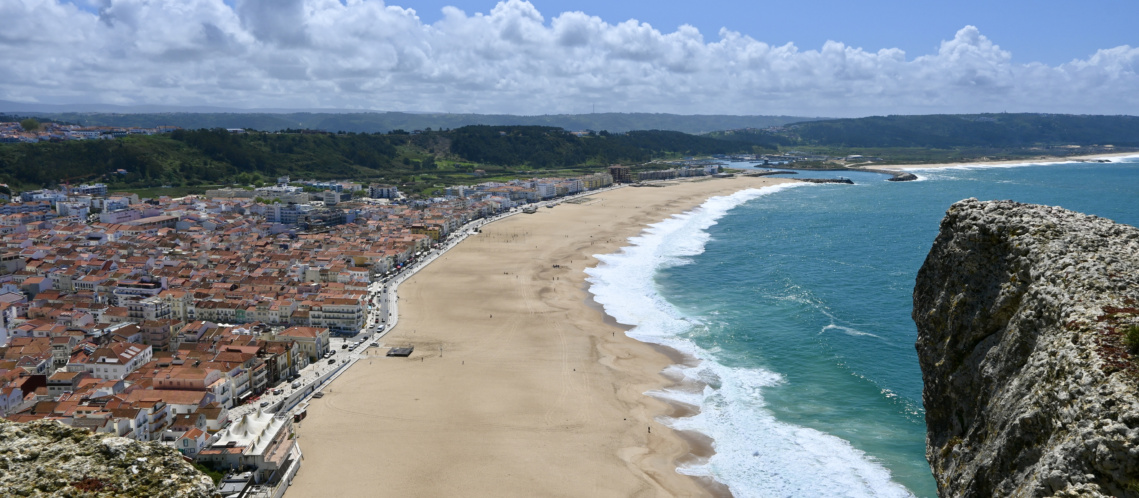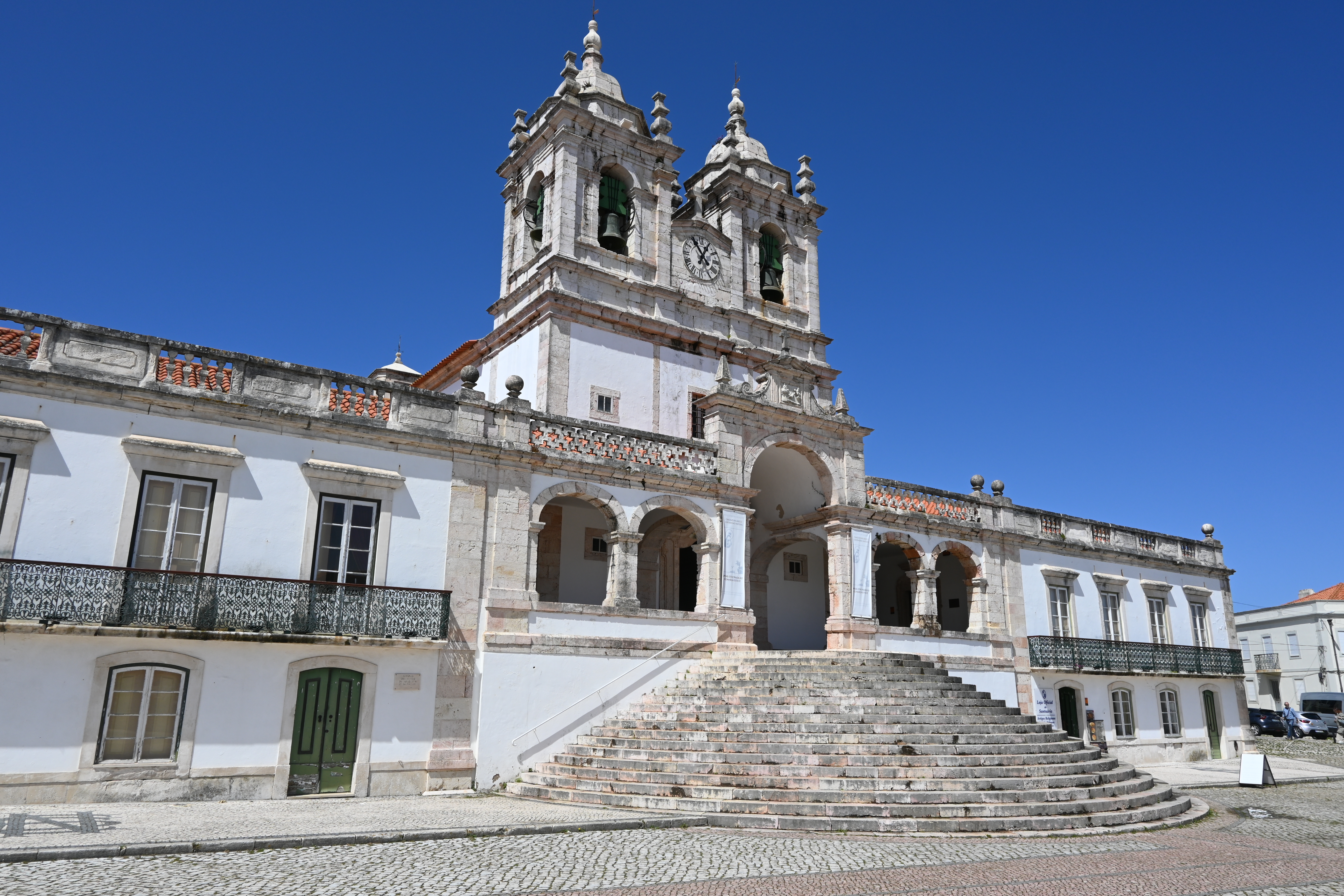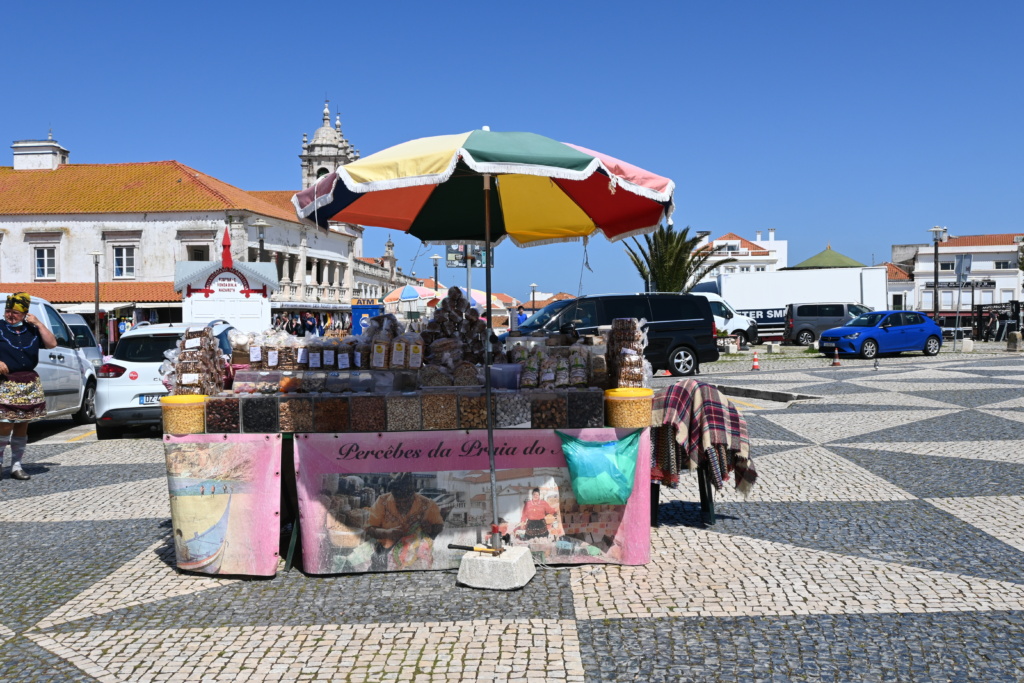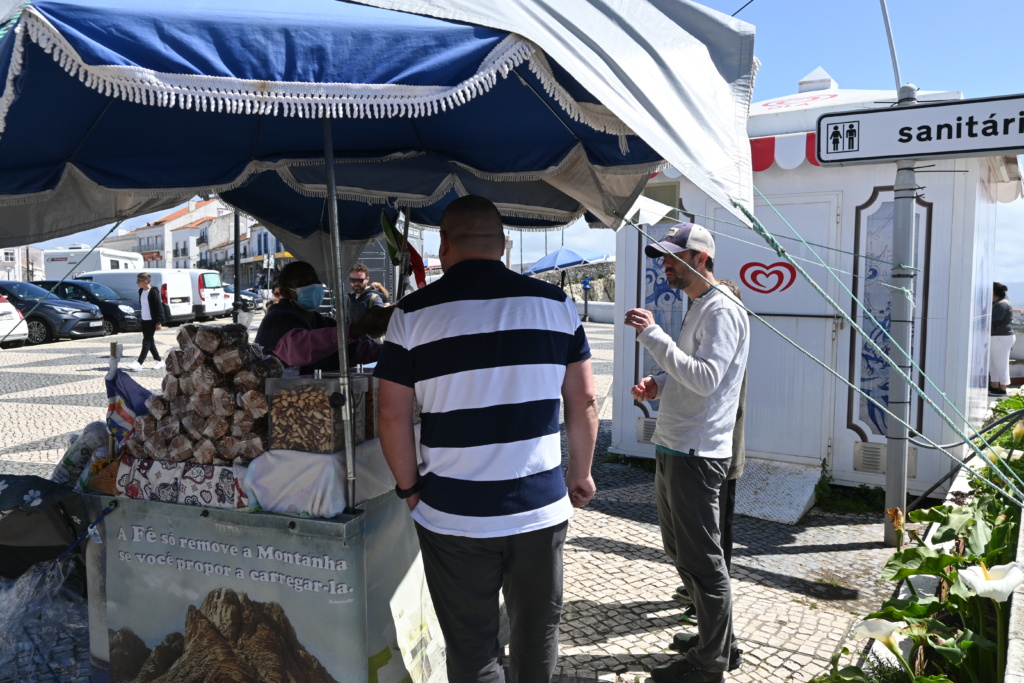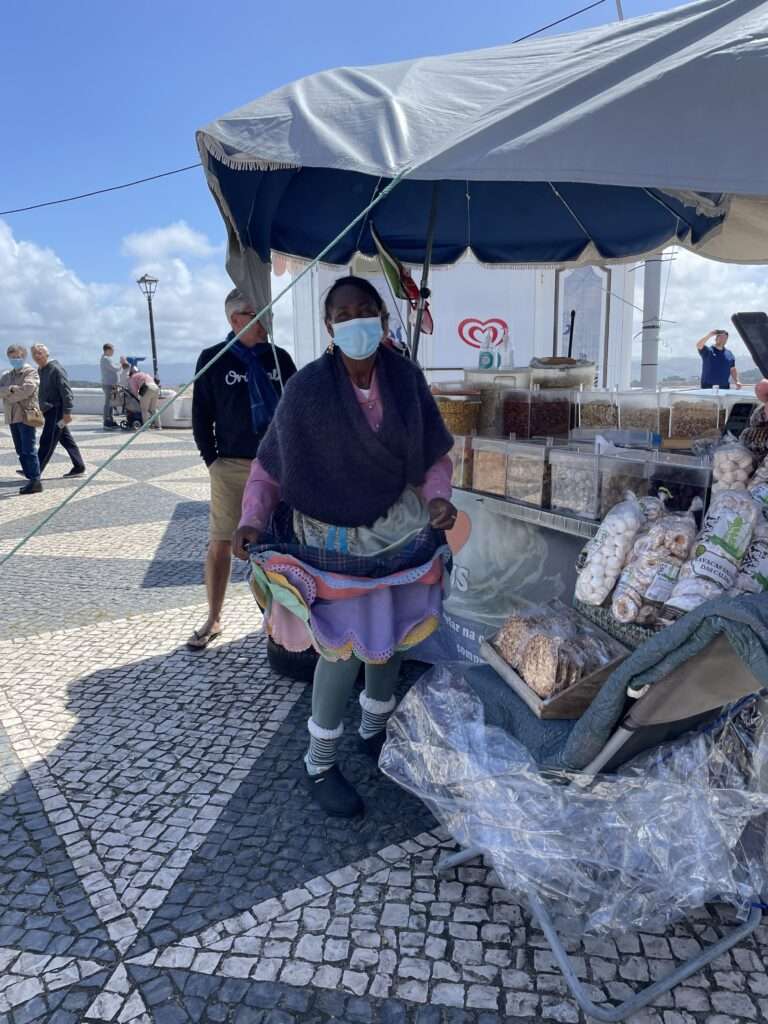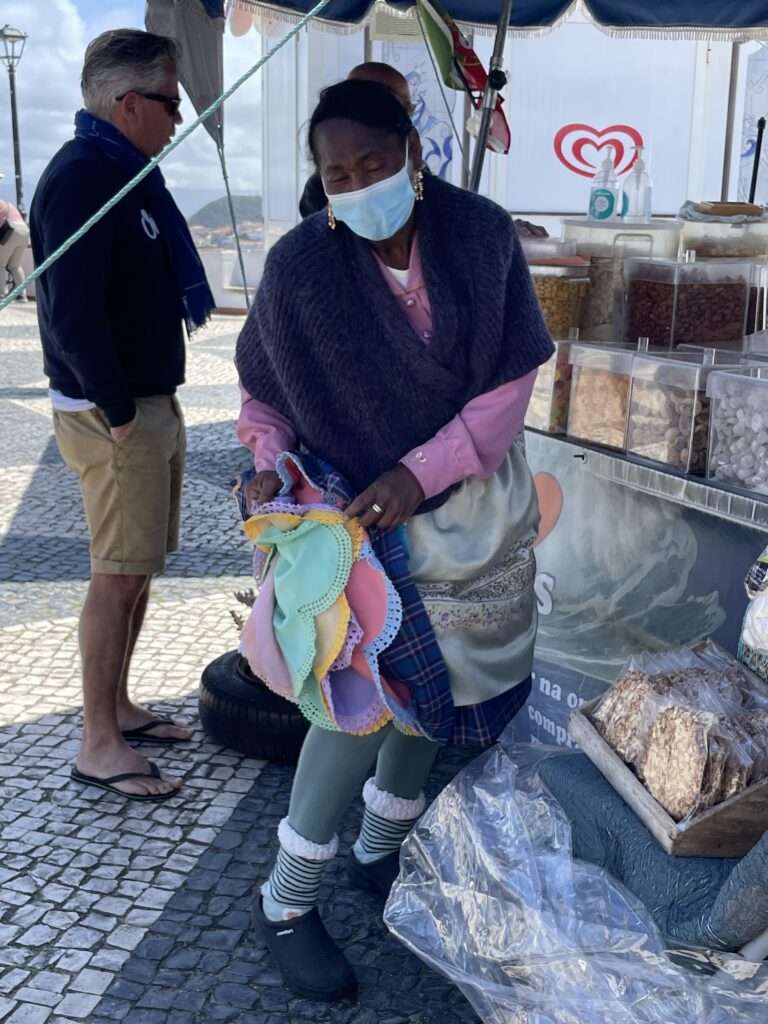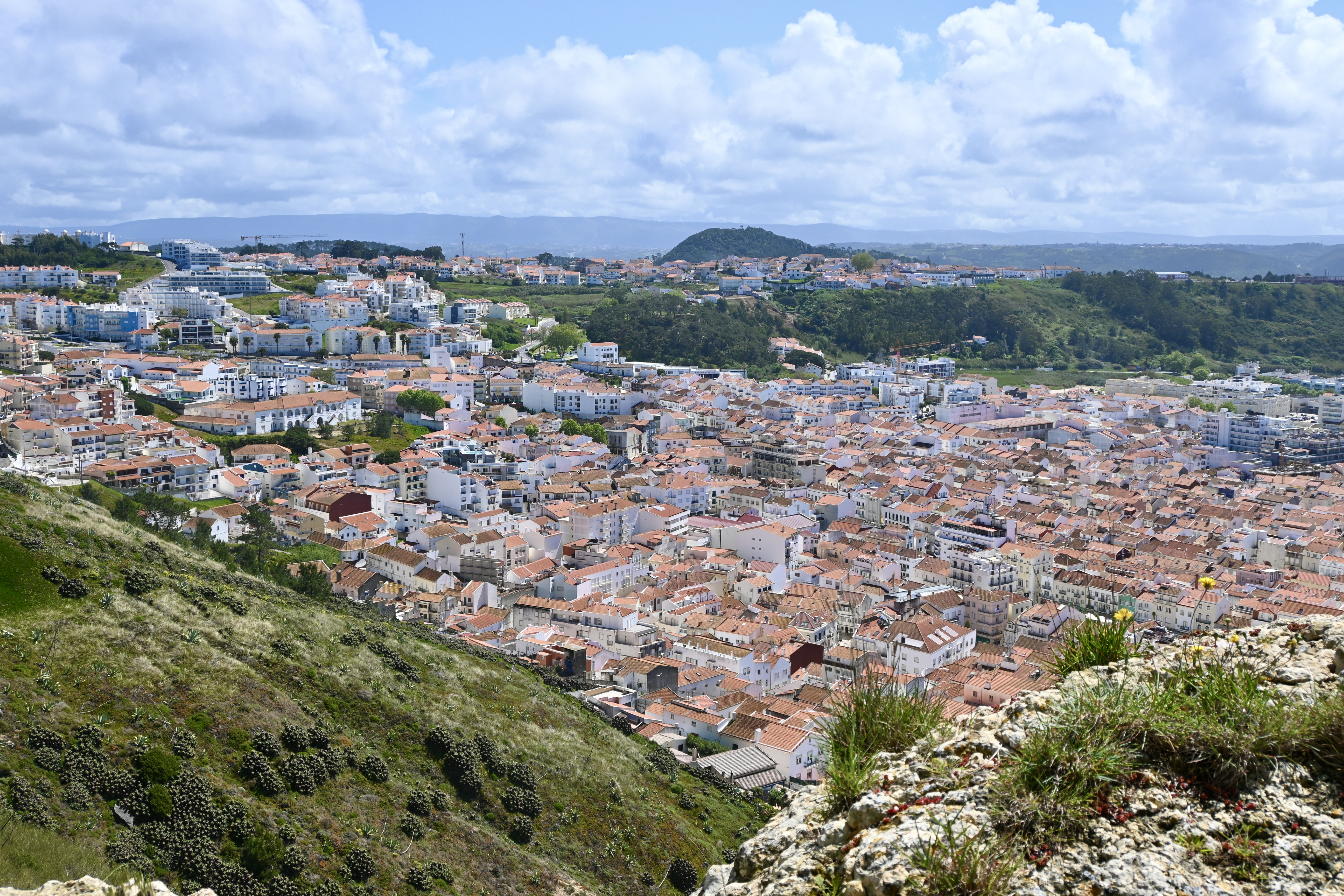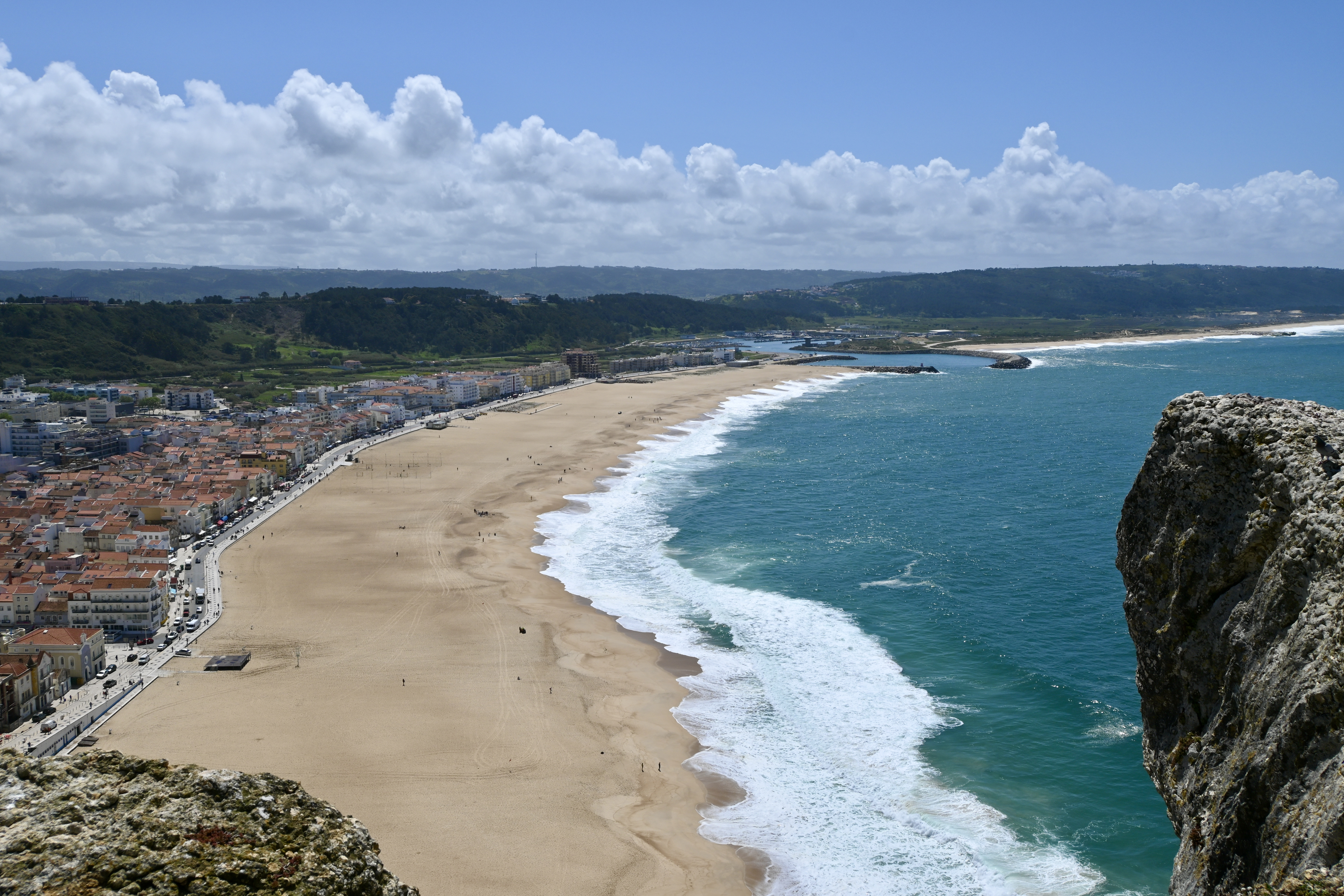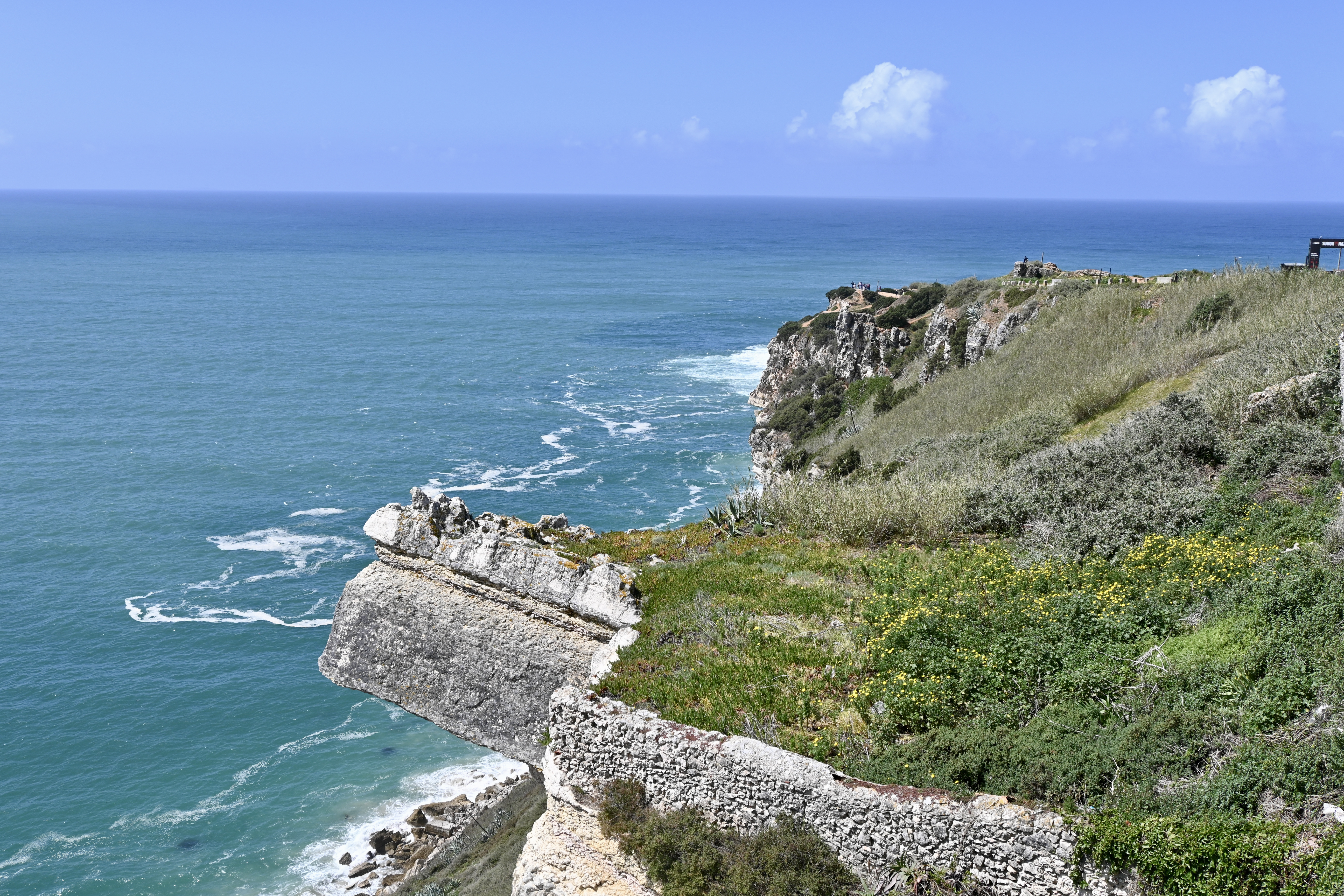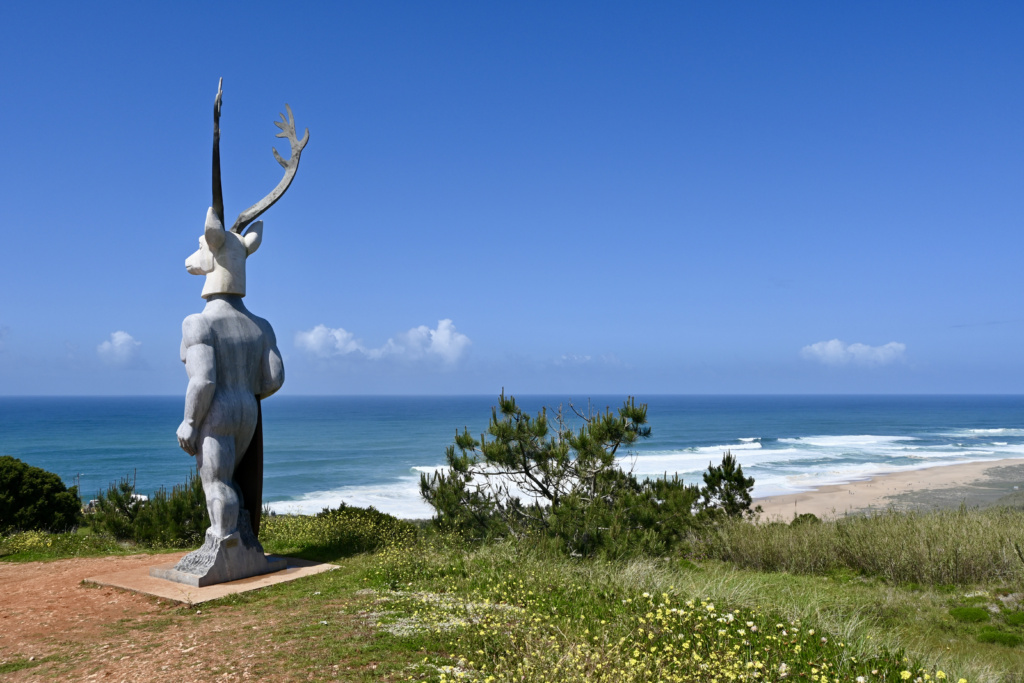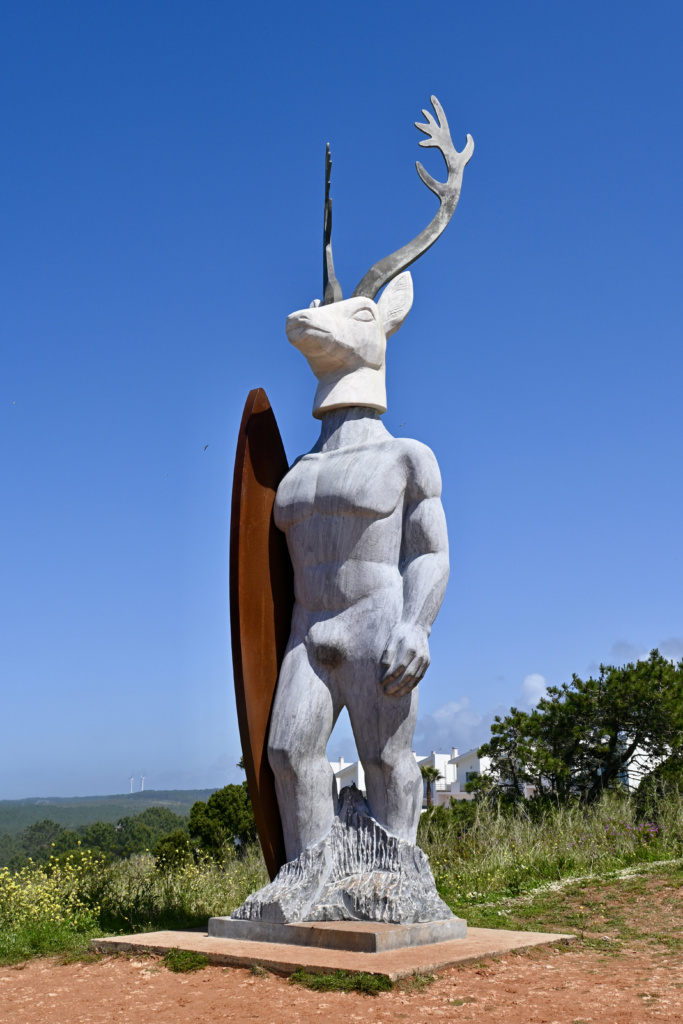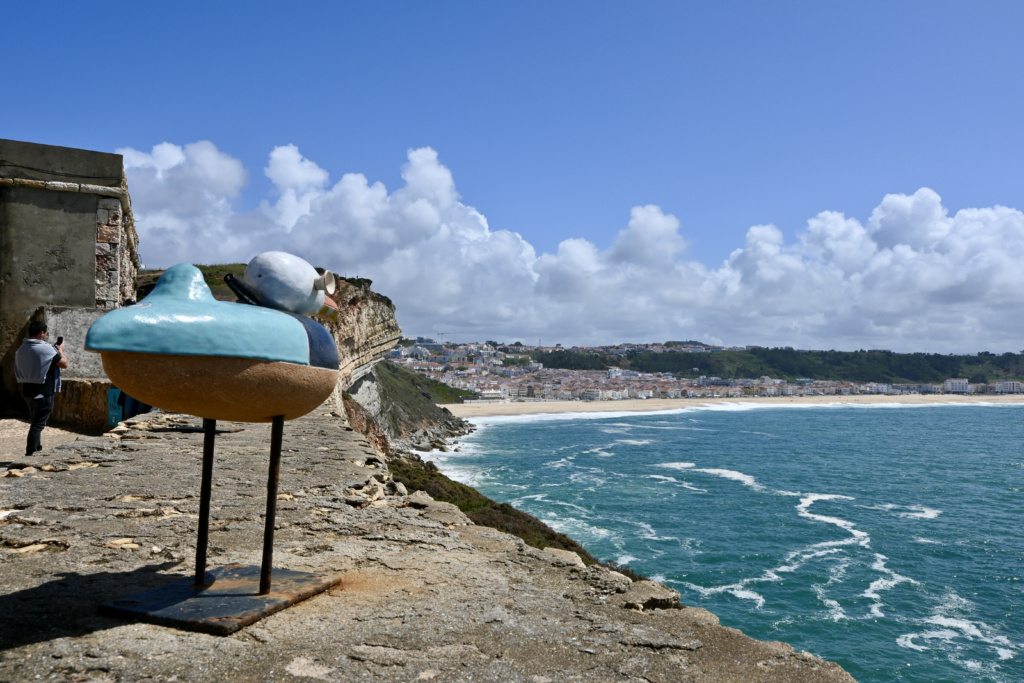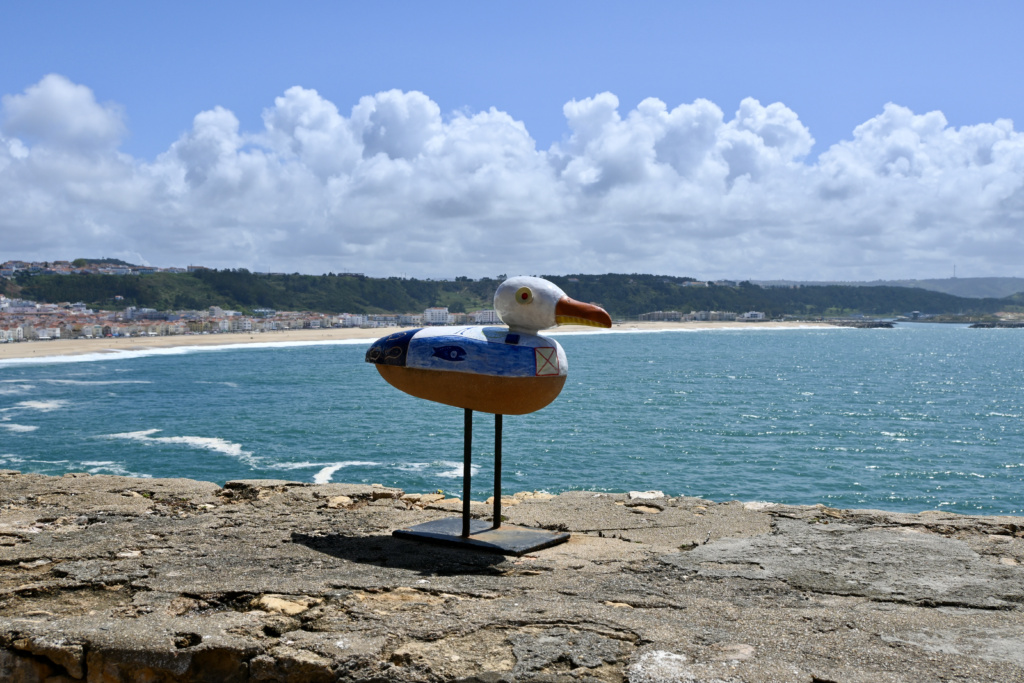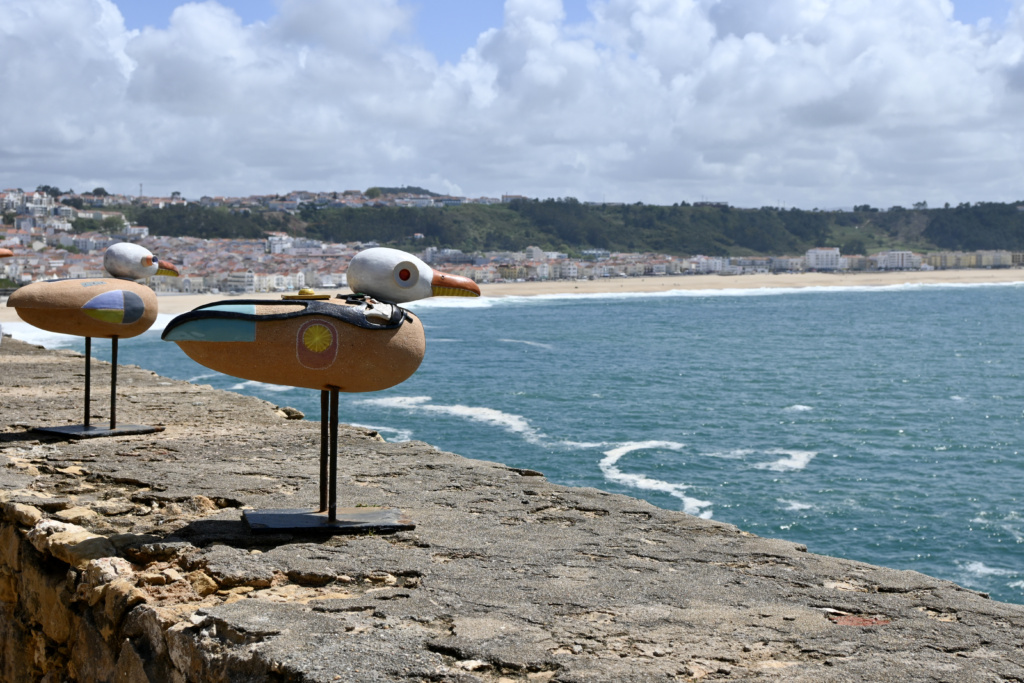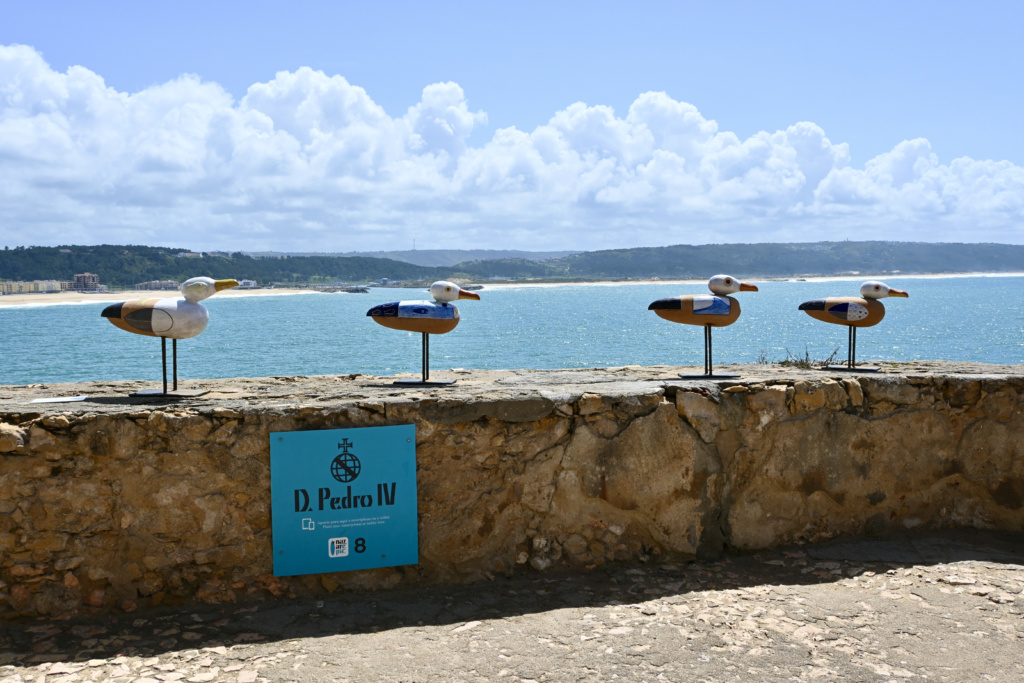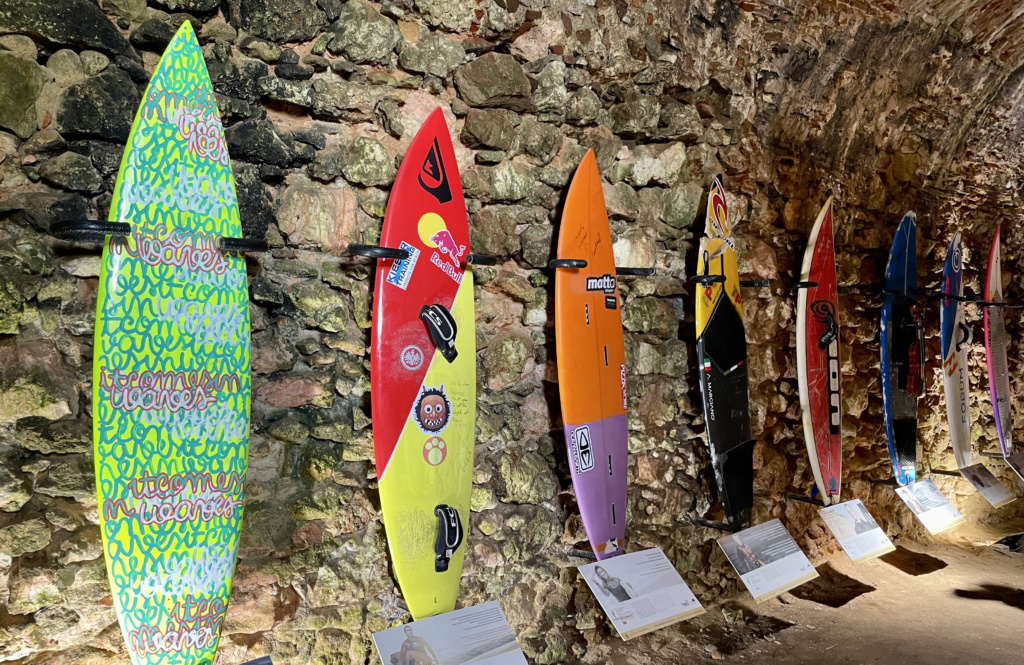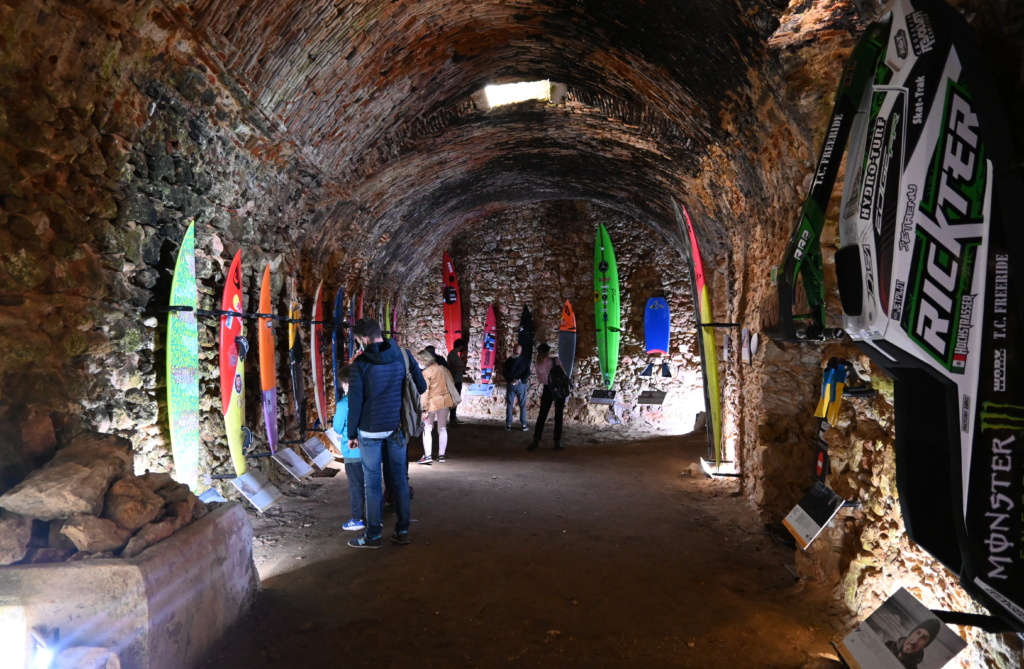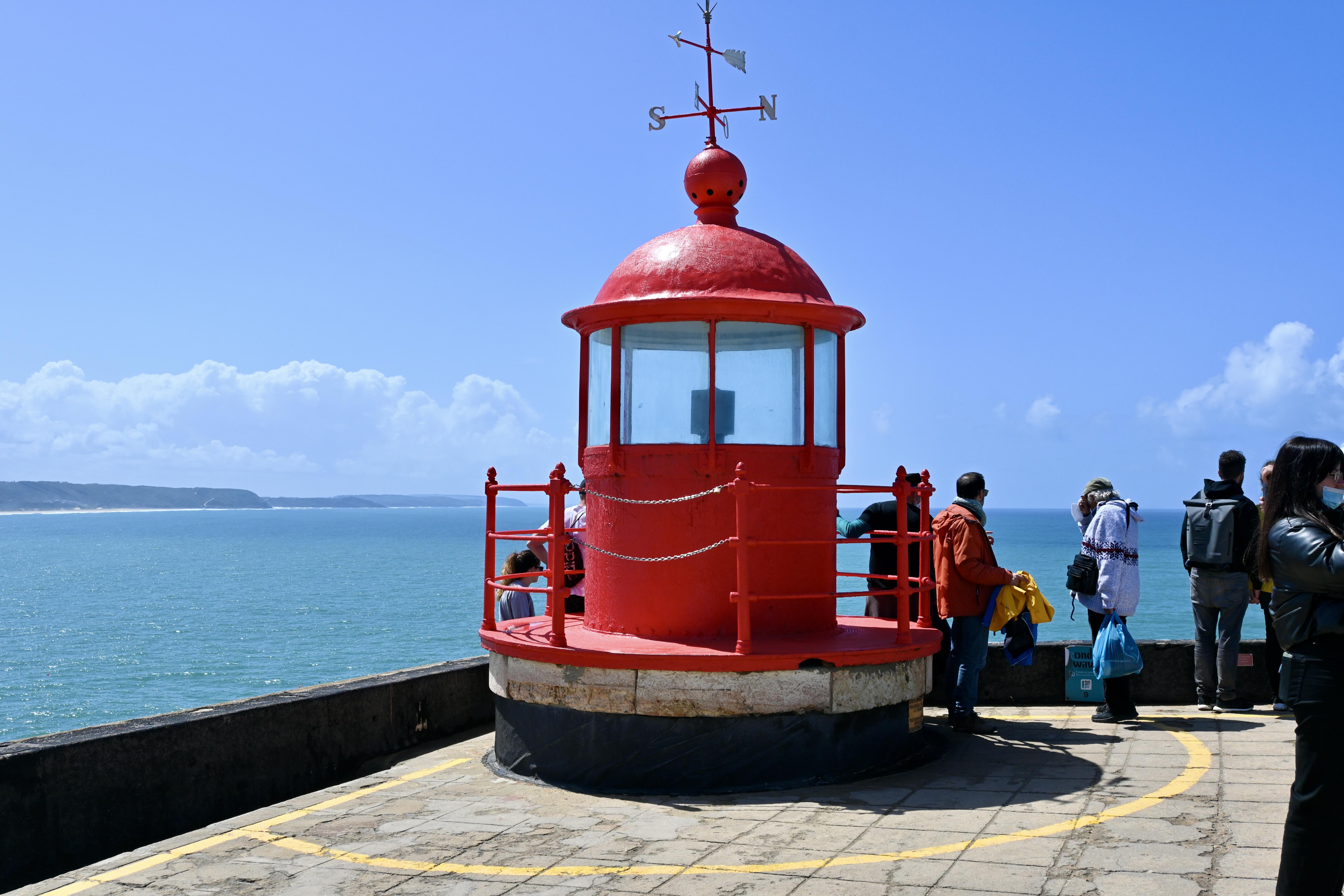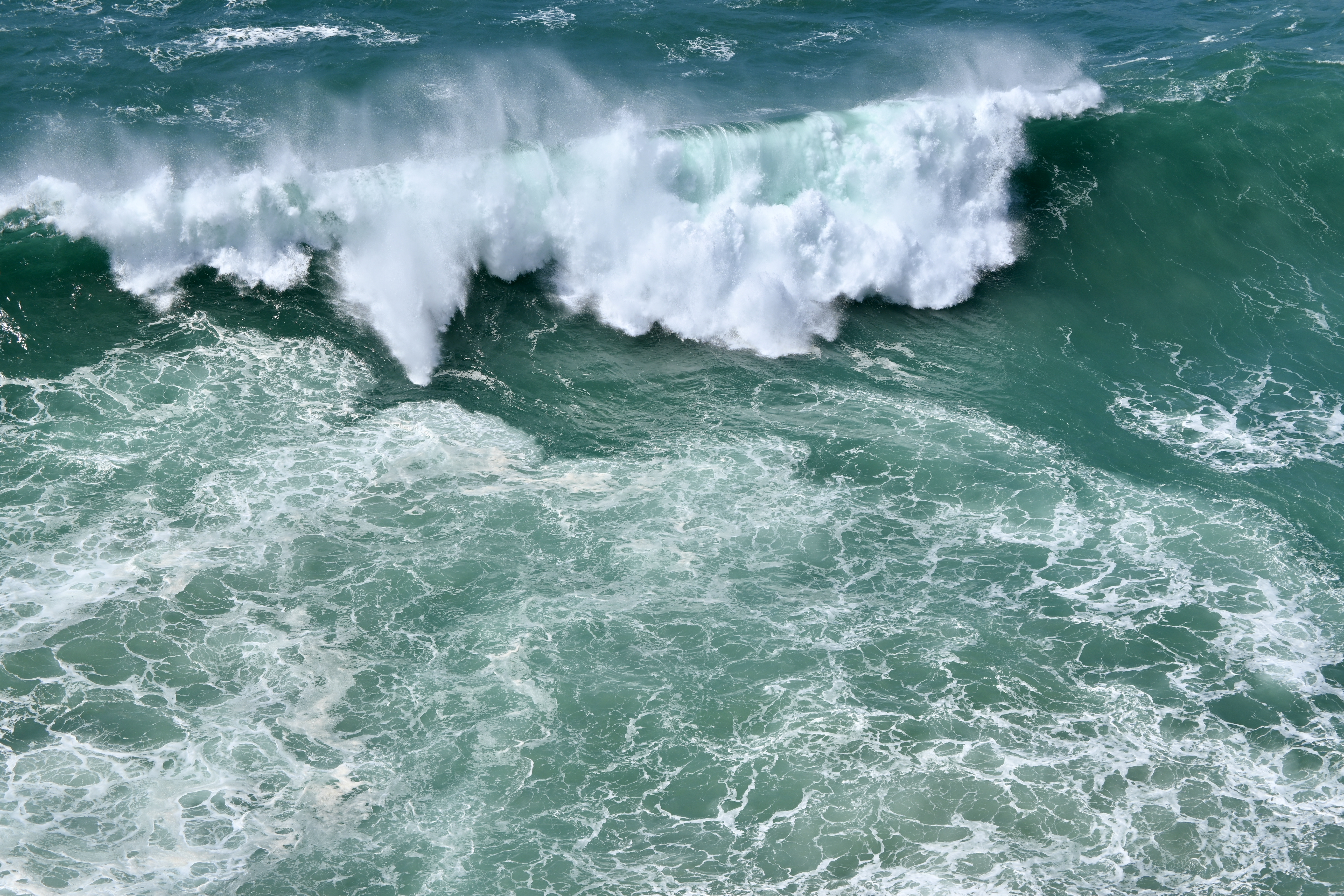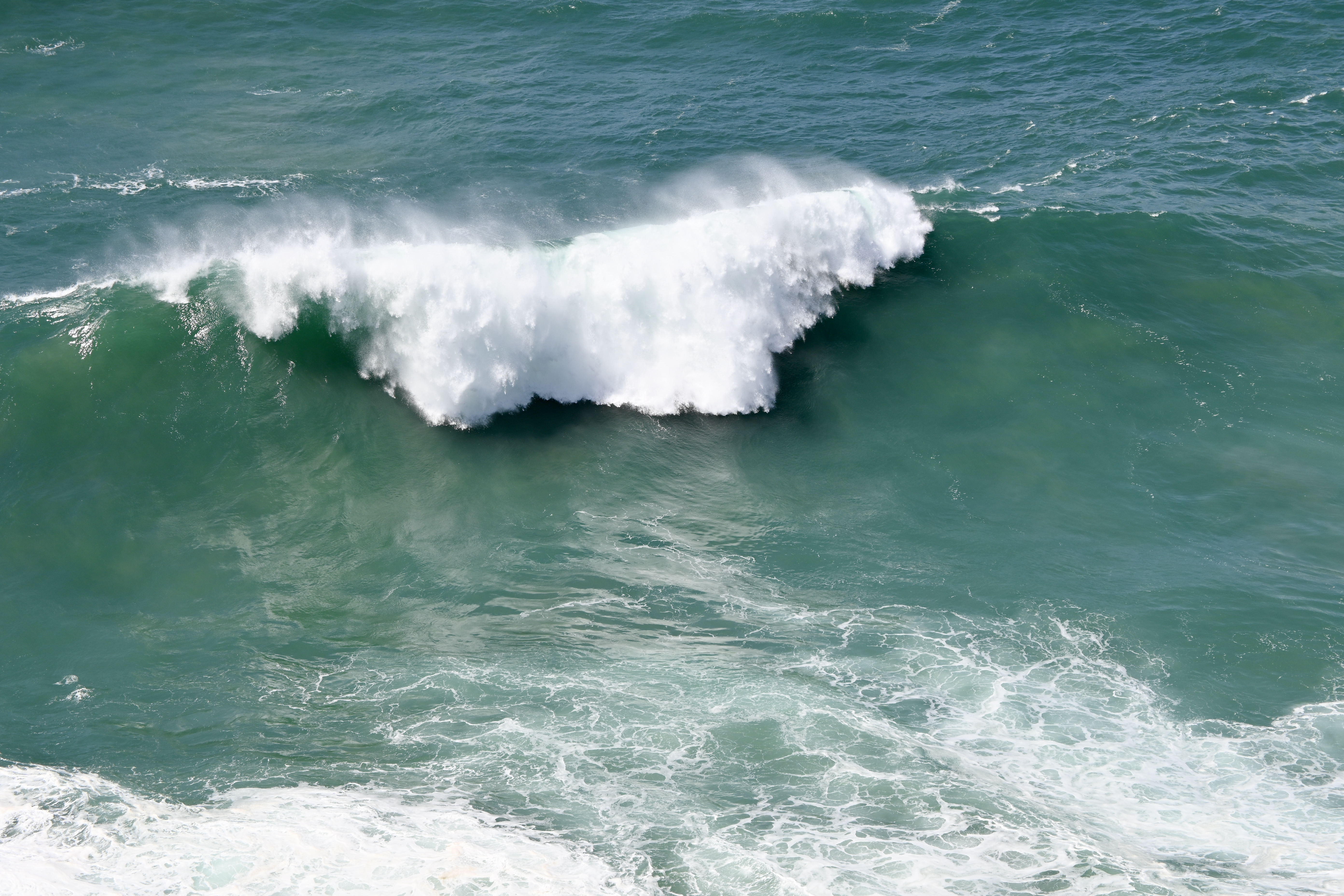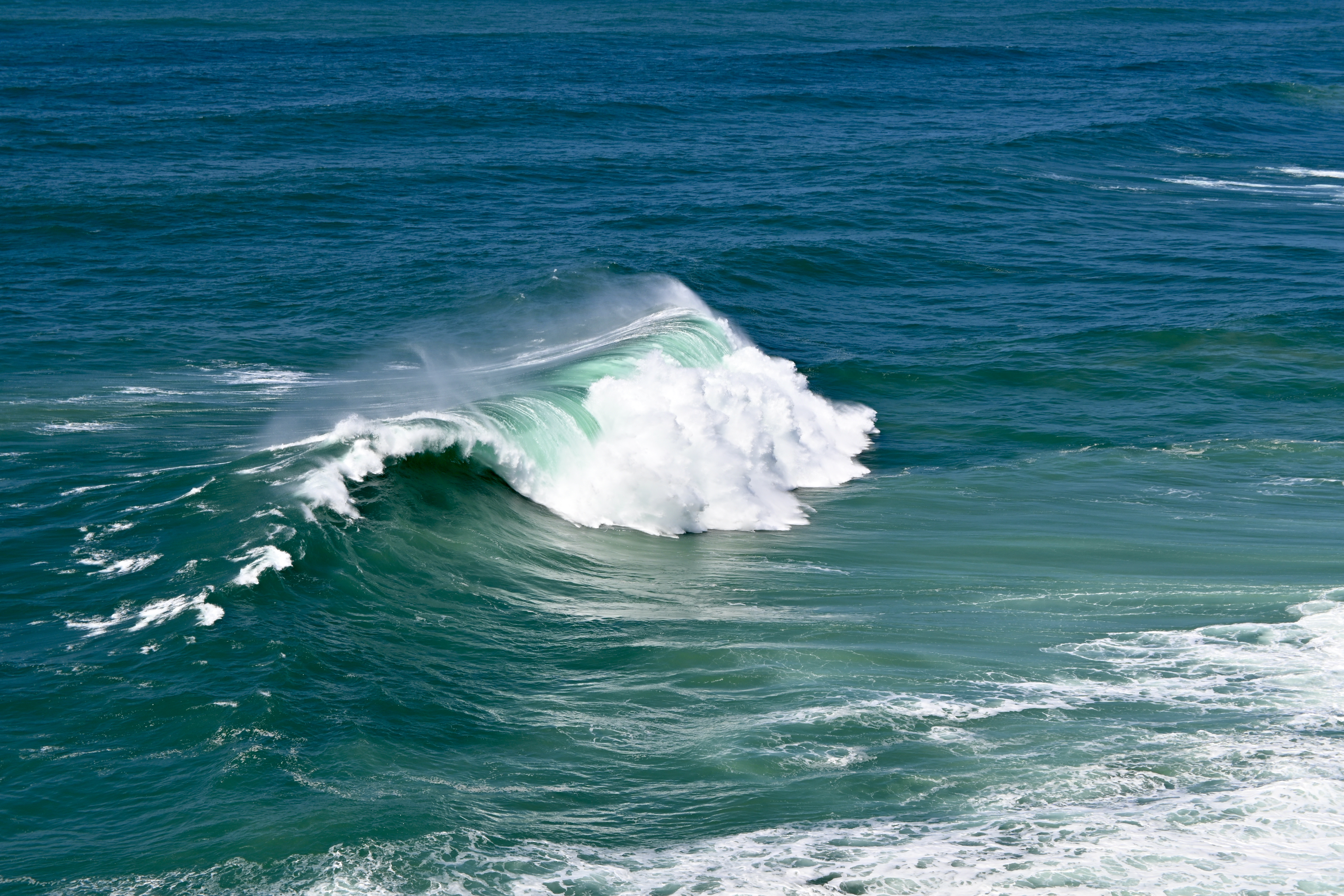The second stop on our Porto to Sintra transfer tour was Nazaré. Located on the Silver Coast in Central Portugal, Nazaré is best known for its record-breaking waves and the surfers who brave them. Nazaré is made up of two regions, Praia (the beach area) and Sitio (the old town built on top of the cliff), which are connected by a funicular.
Our first introduction to Nazaré was navigating the narrow streets of the Sitio neighborhood in an attempt to find a parking spot. Igor lamented the many large campers visiting from Spain, clogging up parking lots and going the wrong way down one way streets. We circled the town three times before finally getting lucky and finding a spot. We parked and headed towards the main square.
We admired the town’s church, Santuário de Nossa Senhora da Nazaré, that dominated Sitio Square. The church is famous for its Black Madonna statue, which is thought to be one of the oldest sculptures of the Virgin Mary. Brought to Spain in the 4th century and said to be carved by Joseph of Nazareth himself, the statue was kept in a Spanish monastery until 711, when the Moorish army invaded and a fleeing monk hid it in a cave in the cliffs of Nazare. Legend has it that the statue was discovered centuries later in 1182 when Dom Fuas Roupinho was hunting a deer. The deer fell off a cliff to its death while being chased by Roupinho on horseback. Struggling to stop his horse from suffering the same fate, the hunter prayed to Our Lady of Nazaré, who stopped the horse in its tracks… right in front of the cave where the statue had been hidden for centuries.
We wandered around the square, checking out the little shops and food vendors that filled the area. There were several women selling a variety of nuts from carts around the square. The women were dressed in Nazaré’s traditional seven skirts. Although the exact meaning behind the seven skirts is undetermined (one for each day of the week, one for each color of the rainbow, or simply to keep warm?), the tradition traces back to the wives of fisherman who wore them on the beach while waiting for their husbands to return.
After stopping to purchase some nuts, we walked to Miradouro do Sitio, an unbelievable view from above of Nazaré and its beaches. Since we drove to Sitio from the opposite direction, I didn’t realize how high up we were until we went to this viewpoint. It was spectacular.
We continued to walk along the cliffs towards the lighthouse. The Farol da Nazaré is part of the São Miguel Arcanjo fort, which also houses a small surfing museum. Before reaching the fort, we passed the Veado statue. This unusual statue combines two of the things Nazaré is known for – deer (from the Black Madonna statue legend) and surfers. The bizarre statue stands high on the cliffs, looking out over the ocean.
We continued towards the fort, enjoying the incredible views in either direction. On one side, there were stunning cliffs with the town and Praia do Nazaré in the background. On the other, the ocean waves pounded on Praia do Norte, one of the most famous surfing beach in the world. It was gorgeous. And by the way… can you believe this beautiful blue sky was only a few hours and 90 miles from the ominous black skies of Aveiro? Hard to believe this was the same day!
After enjoying the views, we reached the fort and paid the small fee to enter. Immediately inside was a small room with some surfboards and stories of the surfers who rode them. We passed through this room and exited the building to a lower level landing of the fort, where we could get the same bird’s eye view of the town as the wooden seagull sculptures lining the wall.
From here we headed into the fort itself and saw the rest of the surfing museum. It was neat to see the different sizes, shapes and designs of the boards and read the stories of the people who had braved the waves. Nazaré’s huge waves are the result of an enormous underwater canyon that ends at Praia do Norte and at some points is more than 3 miles deep. Waves of up to 100 feet have been recorded here. The waves were so large that up until recently, nobody dared to surf them. In fact, nobody could surf them because they could not safely paddle out to the enormous waves. But a push by the town in 2008 to buy jet skis to tow the surfers out to the waves changed everything. In 2010, Garrett McNamara broke the work record by surfing a 78 foot wave there, and suddenly Nazaré was the place to surf. In 2021 his record was broken when Antonio Laureano rode a 101 foot wave. Every year, more and more surfers train to brave the world’s largest waves in Nazaré.
The last point of interest at the fort was the lighthouse. The fort itself was built in 1577 but the bright red lighthouse was not added until 1903. It is from this level that crowds line the walls to watch the waves and surfers in the winter. One of Nazaré’s most photographed images encompasses the waves, the crowds there to watch them, and the lighthouse.
The “Big Wave” season occurs between October and March, although the biggest of the big happen in the winter from December to February. We were there in April and knew we would not see the big ones. Still, we were impressed with the size of the waves and Igor said they were some of the largest he had seen in the off season. He estimated they were up to 20 feet that day. Watching them crash below us, that seemed bigger than anything I would ever dare go in.
When we had our fill of watching the waves, we headed back towards Sitio and decided to eat at the small food stand just outside the fort entrance. Le Petit Chef Belge, which advertised Artesenal Surf Street Food, offered an unusual assortment of crepes, burritos, and hamburgers. Igor said it was basically the only place in town that would have anything other than seafood and unfortunately 3 out of the 4 of us are not seafood lovers. It actually was a really great burger and the spot had some cool ambiance. It was a good place to end our Nazaré visit.
We loved our visit to Nazaré. Even in the off-season for the waves, it is well worth the stop. The town square is really cute, the cliffside views are amazing, and the waves are impressive even in the spring and summer.
